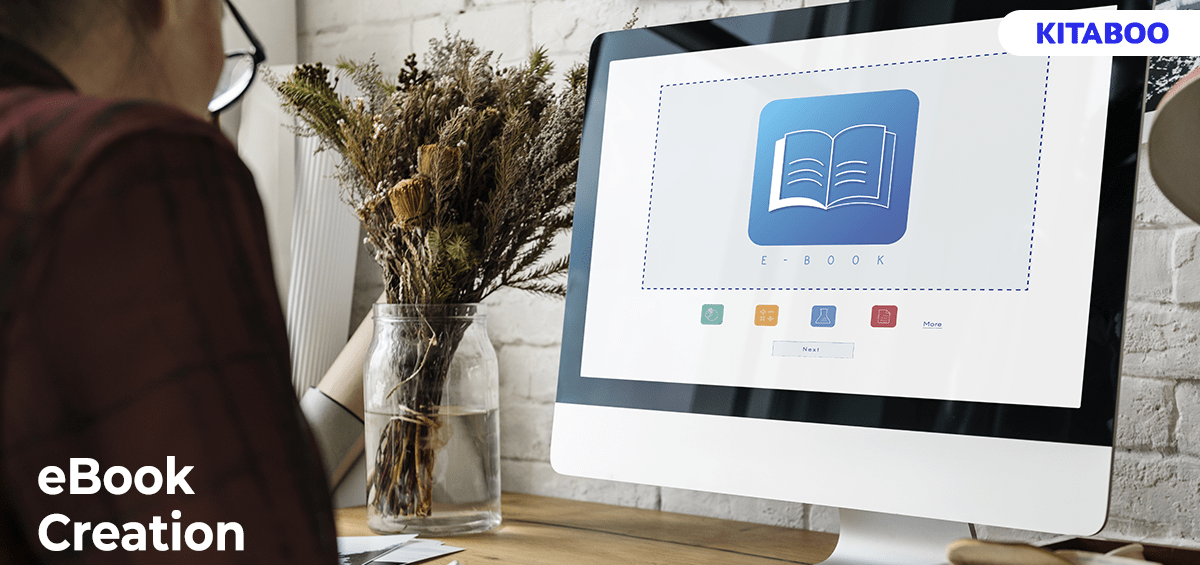eBooks have become incredibly popular over the past decade as devoted readers have shifted to digital formats; their intuitive interface, flexibility, and cost effectiveness make them an attractive option across market segments.
In addition to the financial perks, writing an eBook is a fulfilling and rewarding experience. Despite this however, most content creators tend to get bogged down by the technical aspects of formatting and publishing their eBooks. While quality writing is crucial, the eBook format is equally important. It is a vital element that can make or break the way the eBook is received.
That said, don’t let your formatting or the publishing process get in the way of your book’s success. These eBook formatting and publishing guidelines can get you a perfectly laid-out eBook in no time, minus the hair-pulling!
Table of Contents:
- 4 eBook Formatting Guidelines
- 5 eBook Publishing Guidelines
- The Bottom Line
4 eBook Formatting Guidelines
Most content creators focus on just that, the creation of content. However, there’s a lot more that goes into the success of an eBook.
Here are some eBook formatting guidelines that can help you be well on your way to reaching your audiences effectively.
1. Font
Ideally, your font scheme should comprise one font for headings, one for highlighted text, and one for body text applied consistently throughout the page.
Although there is no conclusive research on the most efficient font, avoid experimenting with unconventional fonts and stick to basic sans-serif fonts. These are usually familiar to readers and easier on the eyes. More importantly though, stylized fonts generally don’t align too well for most eReaders.
2. Images
Consider where you can add visuals to enhance a reader’s comprehension of the material. Any illustrative elements or graphic breaks you incorporate must be positioned strategically throughout to reinforce and emphasize your message. Avoid adding visuals merely for the sake of filling space.
If you intend to use stock photos, check for publication restrictions to ascertain whether you have permission to do so. Also use high-resolution images that are appropriately adjusted to enhance color and clarity.
3. Paragraphs
The readability of your eBook is impacted by how you space and organize your paragraphs. However,there is no one right approach here.
As a general rule of thumb, most professionals advise that you include a sizable proportion of white space into your layout to avoid deterring readers with lengthy, text-heavy pages.
4. Navigation
Having a clickable table of contents, goes a long way in keeping digital readers engaged.
Instead of stumbling through paragraphs of text in search of what they’re looking for, this will enable them to locate it quickly.
As a content creator/publisher, it is important to ensure that the table of contents is created in a structured manner with an appropriate flow of thoughts.
Top 5 eBook Publishing Guidelines
Apart from formatting, the nature of the digital publishing world lays a lot of emphasis on device and platform compatibility.
With this in mind, here are a few publishing guidelines to get you started.
1. Content Considerations
Before formatting your eBook, it’s paramount to take some time to consider the content itself.
Ensure the text is free from spelling, grammatical, and punctuation errors and that the content is methodically structured and formatted. In the same vein, also ensure the primary focus of the content stays intact.
One advantage of eBooks is that they allow for a lot of interaction. With this in mind, make a plan for where and how you would like to add actionable content. Include checklists, practical advice, infographics, how-to manuals, or other valuable resources that complement your text.
While your readers need to stay engaged, make sure to maintain your primary objective and not go overboard with actionable content.
2. File Types
Now that your content has been polished, edited, and proofread with all visuals in place, it’s time to determine in which file type you will use to publish the book.
The eBook format you choose will depend upon where you wish to release your eBook. PDF is one of the most widely used eBook formats as these files are easy to create and readable on almost any device. However, PDFs can’t reflow or resize to adjust their presentation to the output device.
A great replacement to PDFs is ePUB files. These help make your eBook interactive, every step of the way. Viewing multimedia elements on a PDF requires readers to download additional software, but with ePUBs that issue is solved. Additionally, ePUBs are accepted by almost every major eBook retailer.
3. Design Considerations
Owing to the structure of eReaders, text in an eBook must adhere to precise formatting criteria. Although this could restrict a content creator’s personal style and preferences, their work can reach a wider audience.
Adhering to the specific design considerations, allow eBooks to be optimized for various screen sizes to present a tidy, legible document that can be accessed from multiple devices and platforms.
It’s also a good idea to include page numbers, links, and other elements to make the reading experience more enjoyable.
4. Publishing Platforms
While choosing a file format for your eBook, also consider the publishing platform through which you will distribute it. Each platform has its own specifications and guidelines. It’s imperative to read up on the specific one where you plan to submit your book.
Publishing through a platform is a fantastic way to monetize the eBook. While there are many different platforms to distribute your eBook, your original objective should guide your decision.
You can list your book with the major online eBook retailers, such as Barnes & Noble, Apple iBooks, Google Play Books, and the Amazon’s Kindle Store. You could also leverage your eBook as a marketing tool and distribute it via a white-labeled publishing platform like KITABOO.
5. Testing
The final step of the eBook formatting process is testing. Many designs and other elements can go wrong on various platforms.
Test your eBook across numerous forums and devices after it has been formatted and is ready for publication. This will ensure that the eBook displays and operates properly across devices.
The Bottom Line
While the technicalities of digital publishing may come across as a bothersome chore for some, anybody looking to publish a successful eBook, needs to get their hands dirty. Or not?!
What most content creators and publishers need, is a single platform that can simplify the entire process of creating, publishing and distributing eBooks. That’s where a platform like KITABOO can help.
With over a decade of experience in ePublishing, KITABOO can help you reach your desired readers, with well-formatted, device-agnostic,secure eBooks.
To know more, write to us at KITABOO@hurix.com.
Discover How An Ebook Conversion, Publishing & Distribution Platform Can Help You
Kitaboo is a cloud-based content platform to create-publish & securely distribute interactive mobile-ready ebooks.
You May Also Like







